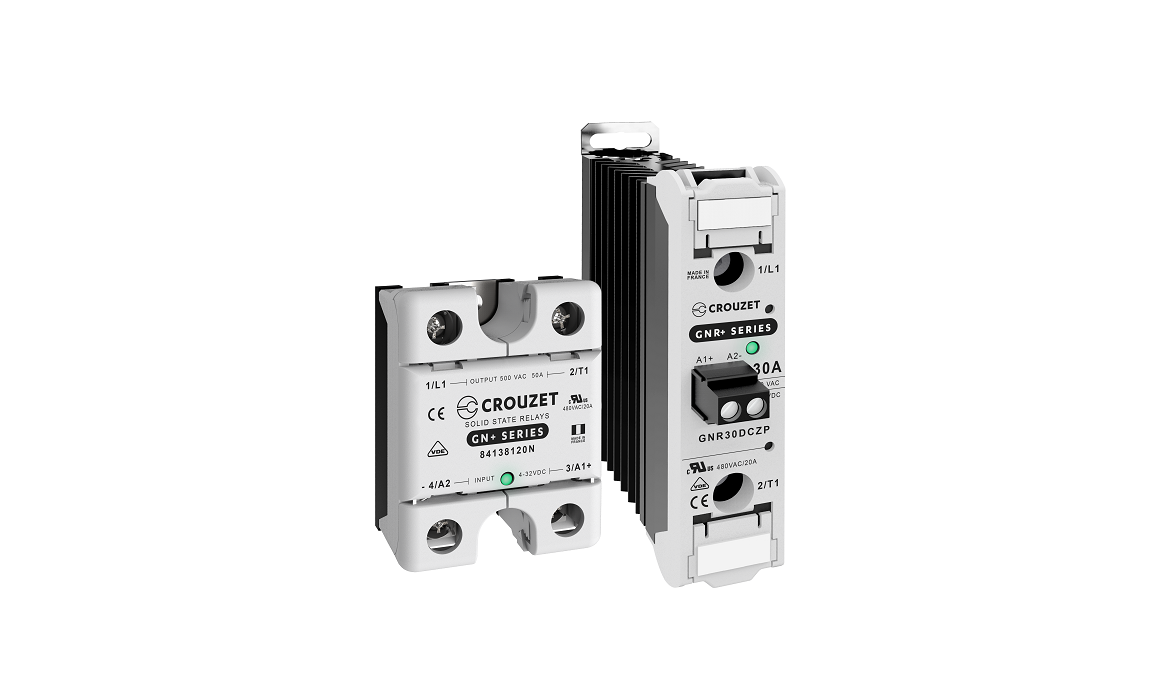T
he all-electronic structure of solid state relays endows them with considerable advantages in relation to electro-mechanical relays.
Main Reasons for Using a Solid State Relay
- Relay Life
Used properly, the most important features of the solid state relay are its reliability and its lifetime. In practice, the outputs of an SSR last practically for ever, while the switching contacts of an EMR are subject to wear, corrosion, sticking, etc. depending on the use. It is commonly accepted that a solid-state relay lasts between 50 to 100 times longer than an EMR; i.e. 25 000 hours operating at a frequency of 1 switching operation / sec (compared with 250 hrs for a traditional relay).
- Cheaper in the Long Run
The cost factor is important when choosing a relay. The initial outlay for an EMR is usually lower than that for an SSR with similar technical characteristics. However, in this sort of calculation, the subsequent costs of monitoring, maintenance and possible replacement of the EMRs are usually forgotten.
- Control Power
The sensitivity of an electro-mechanical relay is around 10 to 20 times less than that of an SSR, i.e. to obtain equivalent output power, an EMR would need 10 to 20 times more power at the control input (200 to 500 mW). This characteristic is vital for compatibility with other electronic equipment, especially digital systems.
- Immunity to the Environment
Immunity to the application environment is a more complex criterion, but SSRs are invariably superior where this parameter is concerned. The mechanical resistance of an SSR, which has no moving parts, is better than that of an EMR. The resin coating on the SSRs offers complete protection against vibration and shock in addition to providing very good protecting in particular against corrosion.
Moreover, humidity has very little effect on SSRs, only reducing slightly the insulation resistance. An EMR is often more sensitive to humidity, which is likely to cause corrosion in the long term.
- Switching Speed
The switching parameters are often the prevailing factors when it comes to choosing an SSR or an EMR. Speed may be extremely important, even critical in certain process control or automatic machine applications.
In certain exceptional cases where very low power factors are involved, the electro-mechanical relay cannot be used, and the same applies if switching without bounce is to be guaranteed.
- Electro-magnetic Emission
The possibility offered by the solid state relay of switching loads when the line voltage passes through zero will limit transient phenomena considerably, as well as current peaks and also electro-magnetic emission as a result.
In certain exceptional cases where very low power factors are involved, the electro-mechanical relay cannot be used. The same applies if switching without bounce is to be guaranteed. So here the AC or DC solid-state relay is inevitable.
Other, more technical factors are obviously also involved in the choice of a relay, all of which will be addressed in detail in the subsequent chapters.
- Noise
With its fully electronic stuffing, the SSR has no solenoid nor mechanical switching contact, its use does not generate any noise contrary to an EMR.
